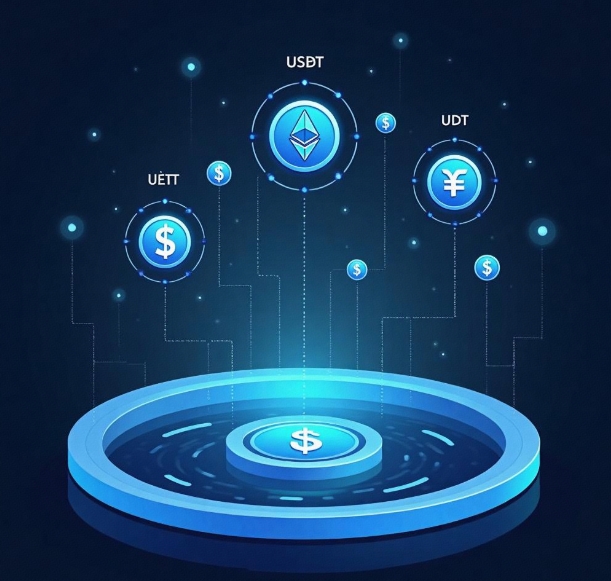How to implement decentralized finance (DeFi) features in a DApp.
- latest articles
- 1.DApp Development & Customization: Merging Diverse Market Needs with User Experience 2.Analysis of the Core Technical System in DApp Project Development 3.How to achieve cross-chain interoperability in Web3 projects? 4.How does the tokenization of points reconstruct the e-commerce ecosystem? 5.How to Set and Track Data Metrics for a Points Mall? 6.What is DApp Development? Core Concepts and Technical Analysis 7.Inventory of commonly used Web3 development tools and usage tips 8.Development of a Distribution System Integrated with Social E-commerce 9.Six Key Steps for Businesses to Build a Points Mall System 10.What is DApp Development? A Comprehensive Guide from Concept to Implementation
- Popular Articles
- 1.Future Trends and Technology Predictions for APP Development in 2025 2.Analysis of the DeFi Ecosystem: How Developers Can Participate in Decentralized Finance Innovation 3.From Zero to One: How PI Mall Revolutionizes the Traditional E-commerce Model 4.DAPP Development | Best Practices for Professional Customization and Rapid Launch 5.Recommended by the Web3 developer community: the most noteworthy forums and resources 6.From Cloud Computing to Computing Power Leasing: Building a Flexible and Scalable Computing Resource Platform 7.How to Develop a Successful Douyin Mini Program: Technical Architecture and Best Practices 8.Shared Bike System APP: The Convenient Choice in the Era of Smart Travel 9.How to Create a Successful Dating App: From Needs Analysis to User Experience Design 10.From Design to Development: The Complete Process of Bringing an APP Idea to Life
Decentralized Finance (DeFi) is revolutionizing the traditional financial system by providing open, transparent, and trustless financial services based on blockchain technology. As blockchain technology matures, an increasing number of DApps (Decentralized Applications) are integrating DeFi functionalities to offer services such as lending, liquidity mining, and stablecoin trading. So, how can decentralized finance features be implemented in a DApp? This article will detail the core technologies, architecture, and security considerations for implementing DeFi functionalities.
I. Core Technical Foundations of DeFi
Before implementing DeFi functionalities, we need to understand its core technical components, which ensure that DApps can operate securely, efficiently, and transparently.
1.1 Blockchain Technology
DeFi is built on blockchain, primarily using smart contract platforms like Ethereum, BNB Chain, and Solana. Blockchain provides a decentralized ledger, making transactions traceable and immutable.
1.2 Smart Contracts
Smart contracts are the foundation of DeFi applications, automatically executing predefined rules without human intervention. For example, in decentralized lending platforms, smart contracts can set collateral ratios, liquidation conditions, etc.
1.3 Decentralized Oracles
Since smart contracts cannot directly access external data, DeFi requires oracles to provide off-chain data (such as market prices). Chainlink and Band Protocol are commonly used decentralized oracles.
1.4 Token Standards (ERC-20, ERC-721, ERC-1155)
DeFi typically relies on ERC-20 standard tokens for transactions and governance, while NFT-related applications may use ERC-721 or ERC-1155 standards.
1.5 Interoperability Protocols
To enable interoperability between different DeFi protocols, cross-chain technologies (such as Polkadot and Cosmos) and bridging protocols (such as Wormhole) play a crucial role.
II. Main Implementation Methods of DeFi Features in DApps
Core DeFi functionalities include decentralized exchanges (DEX), lending protocols, stablecoins, and yield aggregators. Below are specific implementation approaches:
2.1 Decentralized Exchanges (DEX)
DEXs allow users to trade tokens directly without intermediaries. Platforms like Uniswap and SushiSwap use Automated Market Maker (AMM) mechanisms, primarily operating based on liquidity pools.
Implementation Steps:
Create Liquidity Pool Contracts: Users provide token pairs (e.g., ETH/USDT), and the contract automatically calculates prices.
Automated Market Maker (AMM) Mechanism: Common algorithms include the constant product formula (x * y = k).
Transaction Fee Distribution: Liquidity Providers (LPs) receive a proportional share of transaction fees as earnings.
Key Technologies:
Smart Contracts (Solidity)
ERC-20 Token Standard
AMM Algorithms
2.2 Lending Protocols
Decentralized lending allows users to deposit assets to earn interest or provide collateral for loans. Aave and Compound are representative protocols.
Implementation Steps:
Create Deposit and Lending Contracts: Users deposit tokens and receive cTokens (e.g., cDAI).
Set Collateral Ratios and Liquidation Mechanisms: When collateral value drops to a certain level, the system automatically liquidates.
Interest Rate Algorithms: Dynamically adjust borrowing rates to balance market supply and demand.
Key Technologies:
Smart Contracts
Oracles for Asset Prices
Fund Pool Management Mechanisms
2.3 Stablecoins
Stablecoins (e.g., USDT, DAI) are used to reduce cryptocurrency price volatility. In DApps, stablecoins can serve as payment methods, stores of value, or collateral for loans.
Implementation Methods:
Fiat-Collateralized Stablecoins (e.g., USDT, USDC): Guaranteed by centralized institutions.
Over-Collateralized Stablecoins (e.g., DAI): Users mint DAI by collateralizing assets like ETH.
Algorithmic Stablecoins (e.g., FRAX): Adjust supply through algorithms to maintain price stability.
Key Technologies:
Smart Contracts Controlling Supply
Oracle Data Support
Price Stability Mechanisms (Liquidation and Buybacks)
2.4 Yield Aggregators (Yield Farming)
Yield aggregators (e.g., Yearn Finance) automatically optimize DeFi yields, allowing users to maximize their annualized returns.
Implementation Steps:
Create Yield Strategy Contracts: Smart contracts automatically deposit funds into the highest-yielding DeFi protocols.
Automatically Reinvest Yields: Reinvest earnings to achieve compound interest effects.
Optimize Liquidity Mining Strategies: Dynamically adjust fund pool allocations to maximize returns.
Key Technologies:
Smart Contracts
Fund Pool Management
Oracle Data
III. DeFi Security and Risk Management
Since DeFi relies entirely on code execution, security is paramount. Below are key security measures:
3.1 Smart Contract Security
Code Audits: Use third-party auditing firms like CertiK and SlowMist.
Minimal Privileges: Reduce administrative permissions to prevent contract attacks.
Upgrade Mechanisms: Use proxy contracts to enable upgradable smart contracts.
3.2 Oracle Attack Prevention
Adopt Decentralized Oracles: Such as Chainlink, to avoid single points of failure.
Time-Weighted Average Price (TWAP): Prevents price manipulation.
3.3 Economic Model Risks
Prevent Liquidity Attacks: Such as flash loan attacks that can lead to market manipulation.
Optimize Liquidation Mechanisms: Ensure lending protocols can safely liquidate bad debts.
IV. Development Process for Integrating DeFi into DApps
To integrate DeFi functionalities into a DApp, the following development process is typically followed:
4.1 Choose a Blockchain Platform
Ethereum: The most mature smart contract platform with a rich ecosystem.
BNB Chain: Lower transaction costs, suitable for large-scale users.
Solana: High throughput, suitable for high-frequency trading.
4.2 Design Smart Contracts
Write Smart Contracts Using Solidity
Perform Unit Testing (Hardhat/Truffle)
Contract Deployment (Remix, Ethers.js)
4.3 Connect the Frontend
Use Web3.js or Ethers.js to Interact with Smart Contracts
Integrate Wallets (e.g., MetaMask, WalletConnect)
Optimize User Experience (Low Gas Fees, High Transaction Speed)
4.4 Security Audits and Testing
Vulnerability Detection (MythX, Slither)
Testnet Testing (Goerli, Ropsten)
Hackathons and Bug Bounty Programs
Conclusion
The rise of DeFi has made finance more decentralized, open, and transparent. Integrating DeFi functionalities into DApps requires combining key technologies such as blockchain, smart contracts, and oracles, while fully considering security and user experience. In the future, with the development of Layer 2 scaling solutions and cross-chain technologies, DeFi will play a greater role in DApps, driving further innovation in the financial industry.
Through this article, we believe you have gained a deeper understanding of DeFi's core functionalities, technical implementations, and security. If you are developing a DeFi DApp, consider starting with modules like liquidity provision, lending, and stablecoins to build a secure and efficient decentralized financial ecosystem.
-

DApp Development & Customization: Merging Diverse Market Needs with User Experience
As blockchain technology matures and becomes more widespread, decentralized appl···
-

Analysis of the Core Technical System in DApp Project Development
With the rapid development of blockchain technology, decentralized applications ···
-

What is DApp Development? Core Concepts and Technical Analysis
With the rapid development of blockchain technology, decentralized applications ···

 Blockchain
Blockchain












